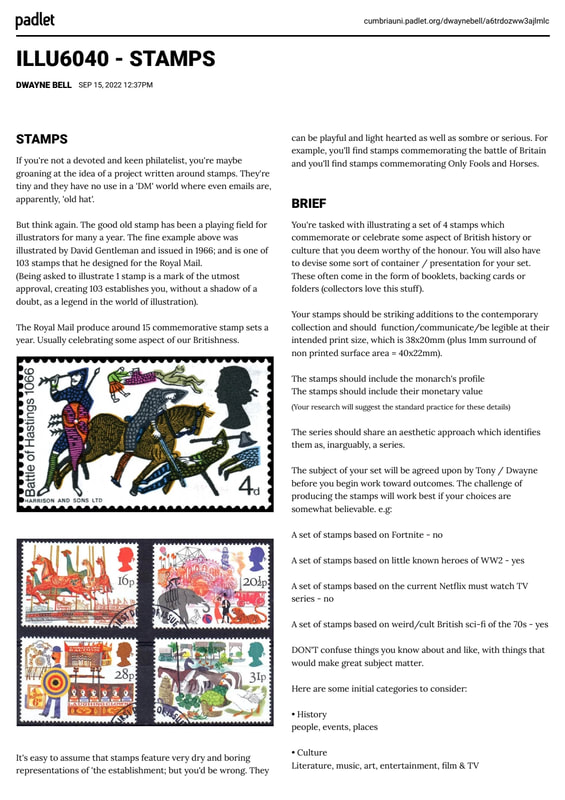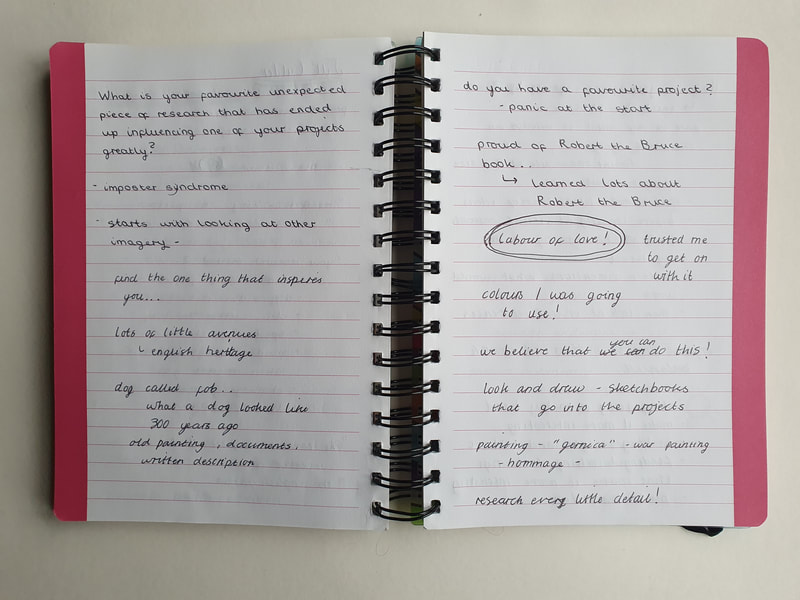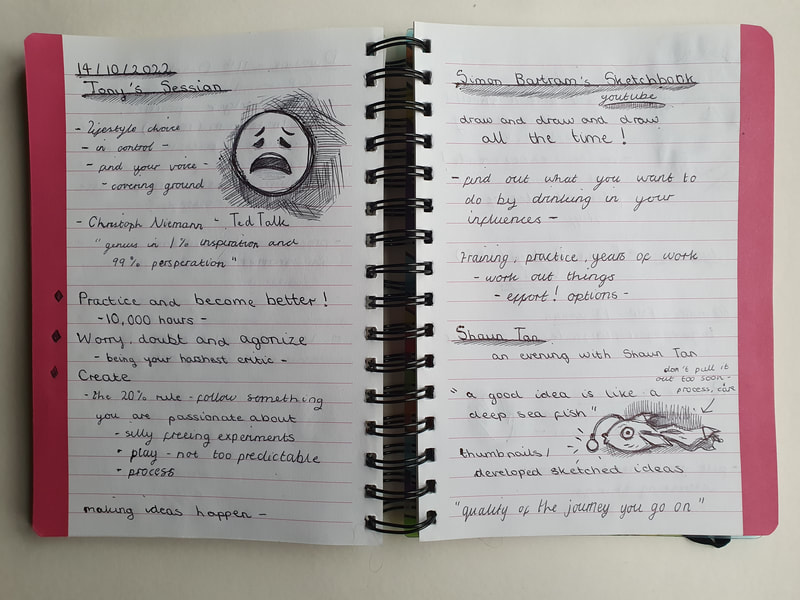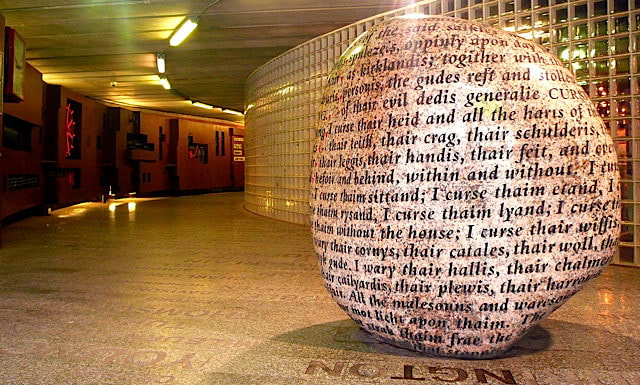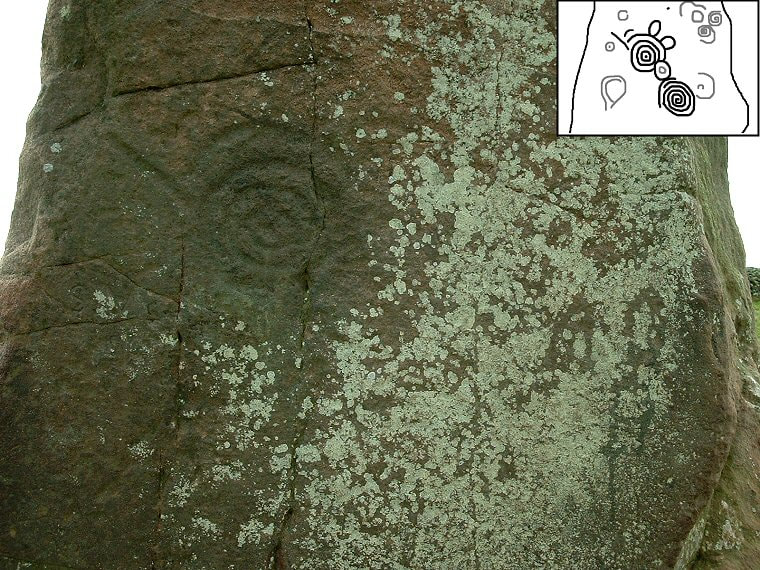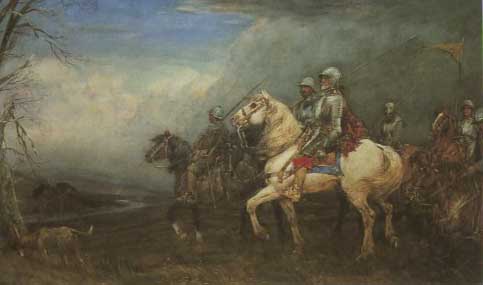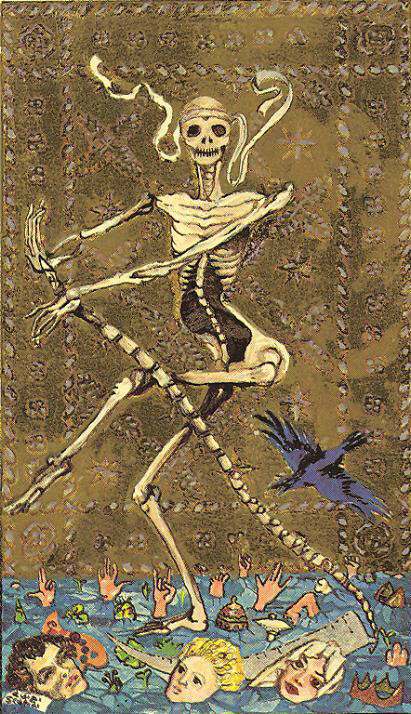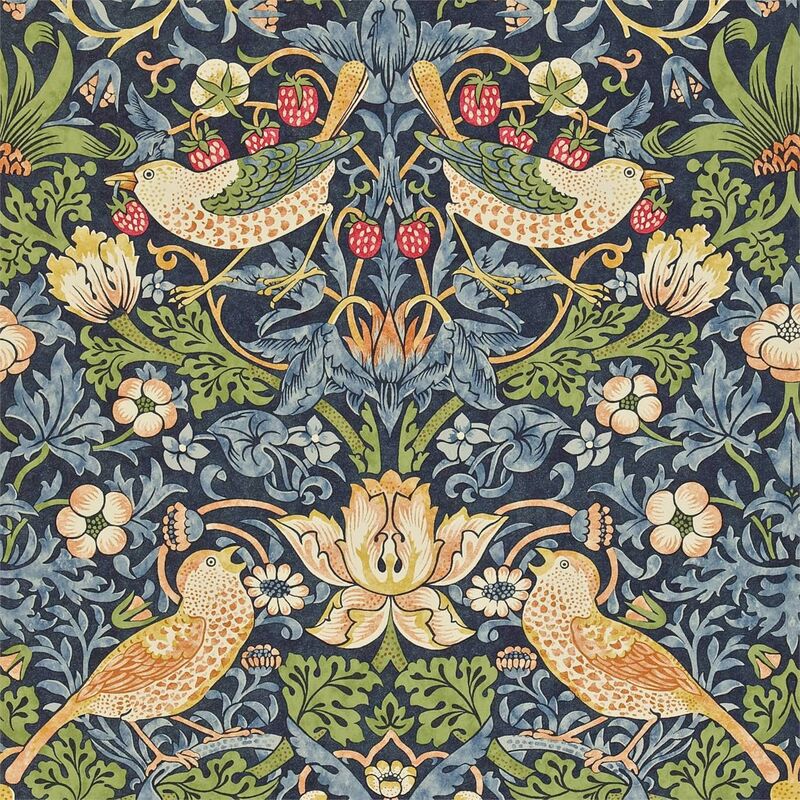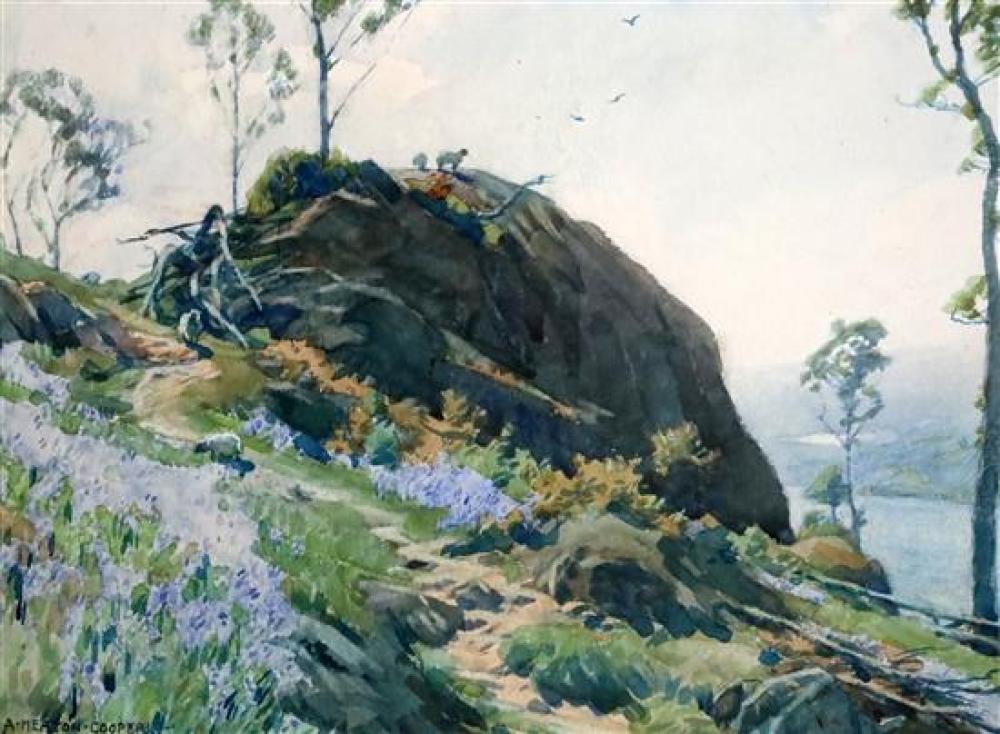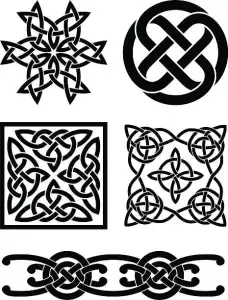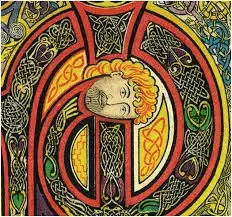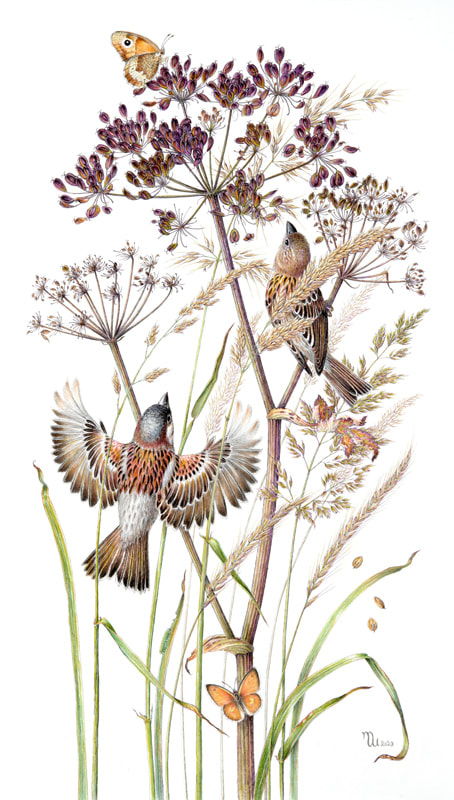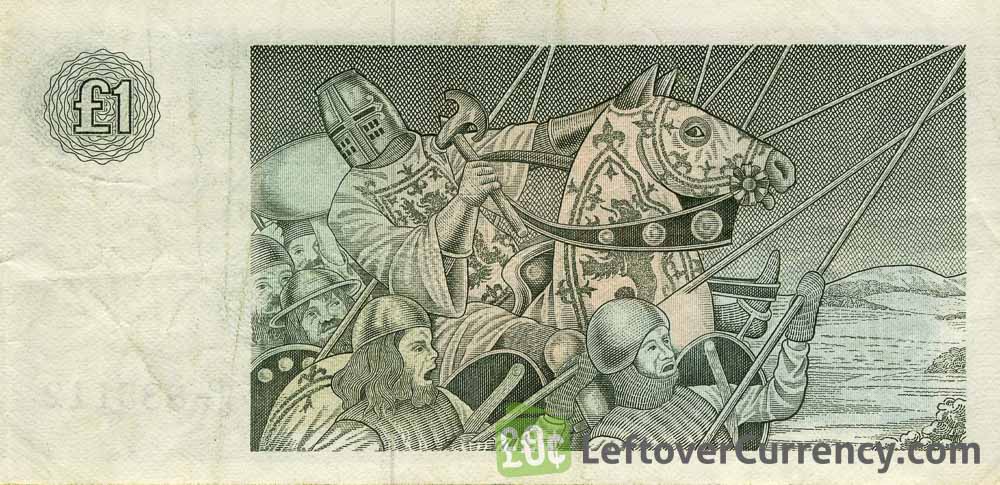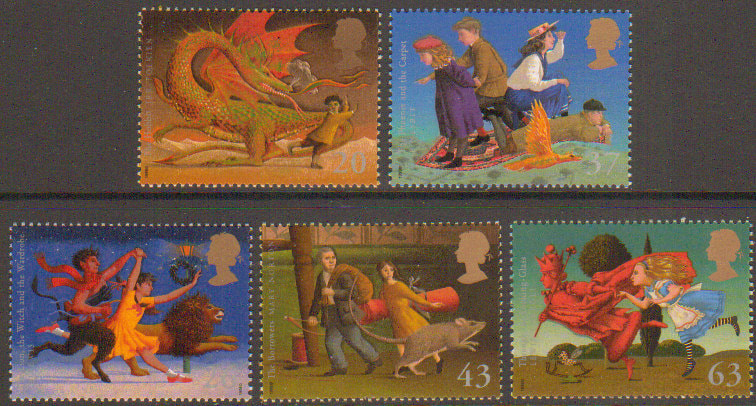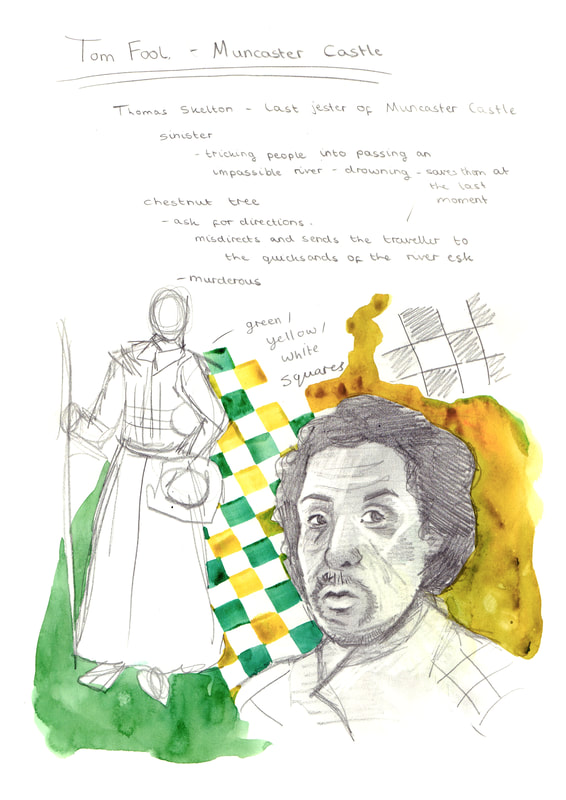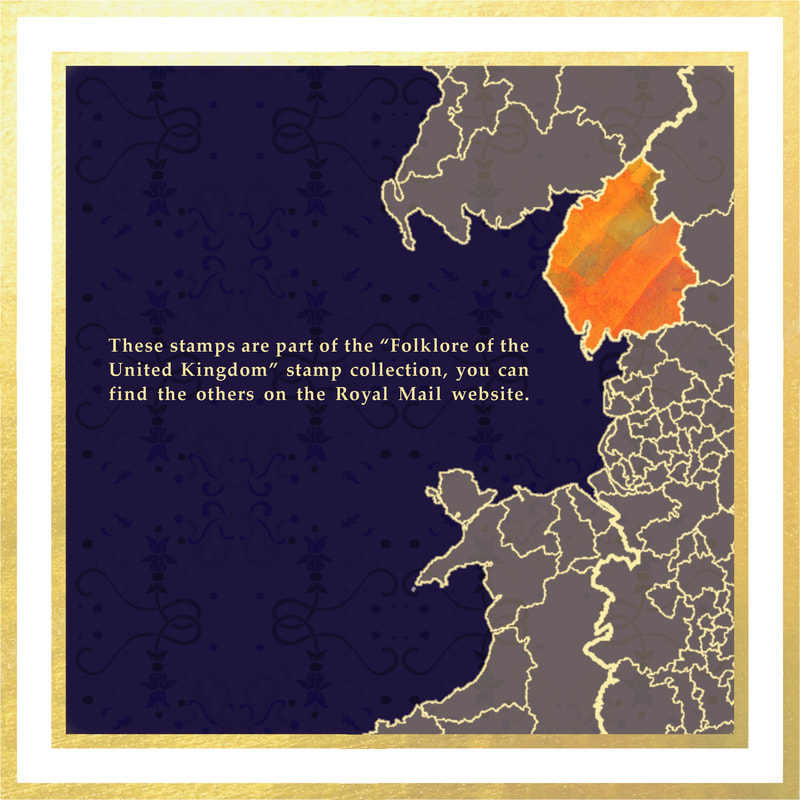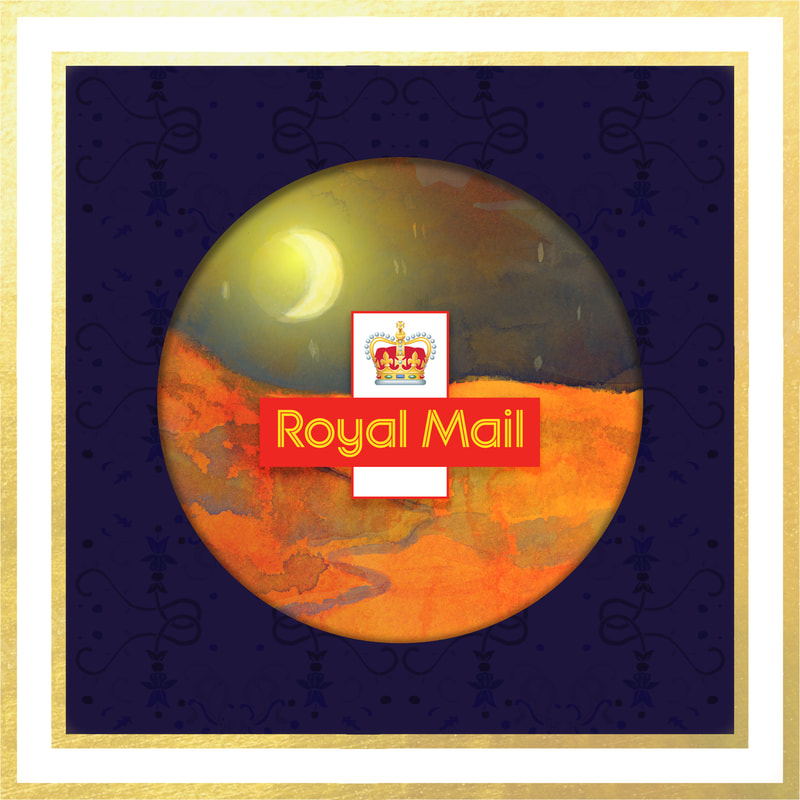- STAMPS -
Lecture Notes and Stamp Concepts
Stamp Set Ideas
I initially started by including five stamps in each set so I had an option to interchange depending on which fit best.
I initially started by including five stamps in each set so I had an option to interchange depending on which fit best.
|
Famous Ships
The first idea I had was to create a set of stamps surrounding famous UK ships, this was inspired by a Mary Rose Coin that I have collected. It is one of my favourite coins that I have in my collection so this was the first concept that came to mind. Reintroduced UK Species
As this is a celebratory set of stamps my brain immediately went to reintroducing species that were lost from the UK and have later been brought back. This set of stamps would be to celebrate the amazing conservation efforts that take place across the UK. |
Historic Sites in Cumbria
My second idea surrounded the historic sites within Cumbria, some of these I have visited and some I haven't so I thought it could be a good way to discover the environment around me and explore something I don't usually like to draw/paint which is buildings and landscapes. Miniature Railways
To me another iconic British thing is miniature railways, I am unsure if other countries have them but I have definitely seen a lot of them within the UK. The only problem with this concept I think is that the miniature railways may be to similar to each other. |
Folk Tales of Cumbria
My final concept for the stamps is the Folk Tales of Cumbria, it is a topic that I am interested in but I haven't done that much research into before this point so I think it would be an interesting topic.
My final concept for the stamps is the Folk Tales of Cumbria, it is a topic that I am interested in but I haven't done that much research into before this point so I think it would be an interesting topic.
Deciding Between Two Concepts
I decided on my two favourite concepts "Reintroduced UK Species" and "Folk Tales of Cumbria" and used this as a starting point for some research mind maps. After feedback with Tony and through my own research I have decided that I thin that the folk tales of Cumbria would be a subject that would require more research and an idea that I don't have a clear vision for yet which is what makes this a good topic to take forward into this process. I would have preferred to do the reintroduced species stamps but I don't think they would have been as challenging for me to create.
I decided on my two favourite concepts "Reintroduced UK Species" and "Folk Tales of Cumbria" and used this as a starting point for some research mind maps. After feedback with Tony and through my own research I have decided that I thin that the folk tales of Cumbria would be a subject that would require more research and an idea that I don't have a clear vision for yet which is what makes this a good topic to take forward into this process. I would have preferred to do the reintroduced species stamps but I don't think they would have been as challenging for me to create.
|
Cumbrian Folk Tales After I decided upon Cumbrian Folk Tales as the topic for my stamp set I began to create a mind map of all the connections my brain made to this subject, from folk tale illustrators, miniaturists, illuminated manuscripts, tapestry and fabric art everything I thought of is on this sheet. I am going to use this to further my research going forward. |
The Folk Tales
Long Meg And Her Daughters
|
"Local legend claims that Long Meg was a witch who with her daughters, was turned to stone for profaning the Sabbath, as they danced wildly on the moor. The circle is supposedly endowed with magic, so that it is impossible to count the same number of stones twice, but if you do then the magic is broken." "The largest of the stones in the circle is 3.3m high and estimated to weigh 28 tons. There are 27 stones still standing in the circle, with a whole load of others reclining. ‘Long Meg’ herself is an outlier, made from local sandstone, and is 3.7m high. The pink stone has a strange quality in certain lights – it ‘glitters’ – and it’s then that you catch sight of the faint, eerily ancient, spiral carvings. Some very practical archaeologists reckon that the menhir’s purpose was to point the way to the circle itself, as the lay of the land means that a traveller from the Eden Valley would have seen it on the horizon long before the circle came in to view. I can find no record of archaeological excavations or ‘finds’ here, but my most worthy tome estimates the date to be third millennium BCE. That’s five thousand years old. What was it for? Well, we just don’t know, but, like a lot of circles, it is aligned astronomically. At winter solstice, if you stand in the centre of the circle, the sun sets behind Long Meg." |
The Cursing Stone
|
"In 2001 a large stone inscribed with a curse was place in the underpass near Carlisle’s Tullie House Museum. It was designed by a local Carlisle artist named Gordon Young and made by Andy Altman. The wording came from The Monition of Cursing by Archbishop Gavin Dunbar of Glasgow in the 16th century. The curse was read out on every pulpit throughout the debatable lands (Scottish border) in a bid to excommunicate the thieving, murdering, raping and godless Reiver families of the region. However, for some strange reason, a few Carlisle residents blamed the stone and its apparent occult powers for some of the city’s unlucky events. I am not sure why though, as these are the words of a holy man, a Bishop of Glasgow. The BBC covered the story of the cursed stone on in the following article entitled ‘Curse of the Cursing Stone’ on 2 March 2005."
"Prior to the formation of the Border Line, the people who lived to the north or south of the rivers of Esk and Tweed and the great hills of the Cheviots lived in relative harmony. However by 1237 the Border Line was in place, agreed by kings whose lines of demarcation took advantage of these great natural barriers. Its formation eventually led to aggression and strife as land which had previously been common to all, irrespective of which side of the river or hill they lived, be it north or south, was fiercely contested. The two peoples were now acutely aware of national boundaries even though they clung to the old ways where allegiance to the family or clan took precedence over loyalty to nation or monarch. The conflict often led to death, maiming and theft as both peoples vied with each other to dominate the resources available: the richest pasture, the most fertile soil and the best areas of woodland."
|
Tom Fool (Thomas Skelton) - Muncaster Castle
|
|
"Thomas Skelton is famous for being the last jester of Muncaster Castle, a stately pile near the village of Ravenglass, Cumbria, in the north-west of England. Fools and jesters were often part of a royal court or noble family and by virtue of their position could often speak harsh truths to their ‘betters’ in the guise of drollery. Shakespeare often uses the fool as the voice of common sense and wisdom, in Twelfth Night the jester is remarked to be ‘wise enough to play the fool’ [4] It is not clear from the scant historical record, or the portrait, which kind of fool Tom Skelton was, but whether natural or artificial, some of his favourite antics have come down to us.
Like many fools and jesters, Tom was a valued and trusted servant of the Pennington family, entertaining them with a mixture of practical jokes and wit. He is famed for such clownish antics as cutting off a branch while he sat upon it; greasing up banisters on the staircase to annoy guests, then when asked who was responsible, quipped that he thought ‘everyone had a hand in it’. However things take a more sinister turn in the anecdotes relating to Tom Skelton reported in ‘The Remains of John Briggs a compilation of tales and essays’ published in the Westmorland Gazette and Lonsdale Magazine in 1825. Briggs relates what purports to be oral tradition surrounding a murder committed by Thomas Skelton at the behest of one Sir Ferdinand Hoddleston, of Millum Castle. Tom recounted a nasty trick he played on ‘Lord Lucy’s Footman’. This seems to have given Sir Ferdinand an idea of Tom’s homicidal potential…“‘he asked me’ said Tom, ‘if the river was passable; and I told him it was for nine of our family had just gone over. – They were geese’ whispered Tom; ‘but I did not tell him that.-the fool set into the river, and would have drowned, I believe, if I had not helped him out'”. Briggs goes on to recount that Tom also had a personal grudge against Dick the Carpenter – “‘[..]I put those three shillings which you gave me into a hole, and I found them weezend everytime I went to look at them; and now they are only three silver pennies. I have just found it out that Dick has weezend them.’ ‘Kill him Tom, with his own axe, when he is asleep sometime – and I’ll see that thou takest no harm for it.’ Replied Sir Ferdinand. ‘He deserves it, and I’ll do it,’ said Tom. [..] And the next day while the unsuspecting carpenter was taking an after dinner nap, and dreaming probably of the incomparable beauties of his adorable Helwise, Tom entered the shed, and with one blow of the axe severed the carpenters head from his body. ‘There,’ said Tom to the servants,’I have hid Dick’s head under a heap of shavings; and he will not find that so easily, when he awakes, as he did my shillings.'” Other tales claim that Tom Fool would sit under a chestnut tree outside Muncaster Castle, watching travelers go past. Should any traveler ask him for directions, they were at risk of being misdirected to dangerous quicksands near the River Esk [6]. May people consider that his will makes oblique reference to this murderous pass-time. ‘But let me not be carry’d o’er the brigg, Lest fallin I in Duggas River ligg;’ [9] Some tales even have Tom recovering the bodies, decapitating them and burying them under tree trunks. |
Hardknott Pass
|
|
Ravenglass is pre-eminent amongst these with its claim to be home of Eveling, King of the Faeries. He lives in the ruins of the Roman castle of Glanoventa (Walls Castle) – complete with luxurious indoor plumbing – with his daughter, Modron. His rath or fort is at Mediobogdum, the ruins of a Roman fort located on the hair-raising Hardknott Pass between Eskdale and the central Lake District.
"The Hardknott Pass, through the Keswick Fells, on the old King’s road, goes from Ravenglass to Ambleside. It is a steep and narrow pathway, with many a bend and twist on its way, winding through the deeper vales between the fells. Overlooking the pass, on a steep and sheer cliff, sits the ruins of an ancient hillfort, from the oldest days known to Albion. Queer in design, unlike the forts built by men, nor by elves or dwarves, the round-fort’s history is one of great mystery. The local folk of the fells and dells name it the Rath. Writings across the centuries suggest this is the name it has always been known by – similar fortification names can be found all across Britannia. The Rath has an interesting amount of folklore surrounding it. The Rath was said to be the home of King Eveling, who was Lord of the Court of Forlorn Hope. Tales and legends of King Eveling echo across the history of the Northern parts of Britannia, most painting him to be an untrustworthy and capricious tyrant. King Eveling had sought to dominate all around him, and had for many years been locked in war with the Iceni, the Fae who guard the land known as Britannia. Many fantastical tales abound of the battles between the two Fae races, which are recorded elsewhere. By the time of our tale, King Eveling ruled only his Rath and the Fellside, having grown insular and bored of the outside world. In the years following the death of Uther, Warlord of Albion, after his young son Arthur had pulled sword from stone, the young King and his Court did tour the land. Some nobles and dukes and princes and kings bent the knee and their banners joined his host. Others stood against him, and were soundly defeated. Some were offered clemency, and learnt of Arthur’s great mercy. Others were unrepentant, and their names have faded from history. Though seemingly inconsequential, the tiny kingdom of King Eveling was visited by the Boy King.
..... The Boy King Arthur smiled with a cold fury, thanked the King Eveling for his time, and wished him well in the days to come. Arthur’s camp stood at the foot of the Fell, ‘neath the Rath. The Boy King and his retinue retired for the night. Only one of them remained atop the Fell, climbing further to a rocky outcrop above the Rath, and there he stayed. As the sun dipped below the horizon, and the moon began to glide through the sky, Arthur watched the Fellside and saw lights flickering into life at the Rath. As the moon reached its zenith, Arthur lit a torch, and waved it in a circle over his head, as he looked up at the Rath. King Eveling and his kin banqueted and began to dance around the Rath, as was their wont. They were gay and merry and their queer music echoed around the Fellside. As they enjoyed their Bacchanale, a great mist rose around the walls of the Rath. Enveloping the Rath, the great power of Merlin, the Archmage, wove across the Fell, and King Eveling and his court were never heard from again. In the camp below, Arthur, the Boy King, watched as the mists rose and covered the Fell before him. When the mist faded, the Rath stood silent and empty. As the sun rose, Arthur and his retinue departed for Carlisle. King Eveling’s power and influenced faded from the world. The tales of King Eveling and his Court persist, however. They say that even now King Eveling holds court here, his kith and kin forever trapped in their dance. Should you climb the fellside and enter the Rath, you will find only the ruins of a long disused fort. But find yourself within the ring of stones ‘neath the full moon’s light, then you may see the King and Court in their eternal dance. Watch them if you will, but do not join the dance, for you will never again find your way home. Many young men and women of the neighbouring villages have been tempted over time to climb to the Rath and see the dance of the Court – many have come back having seen nothing. These are the tales that the locals tell – whether there be any truth to them, I know not." |
Inspirational Artists and Artforms
I used my mind map that I created earlier to gather some research about artists and artforms that could inspire this project.
|
Arthur Rackham is a name that automatically comes to my mind when thinking of folk tales of fairies, his illustrations are full of glorious detail and have a unique and whimsical grasp of colour which makes them appear otherworldly.
The highly rendered and digital style of Tim McDonagh is not generally the art I would look to for inspiration, however especially the first image of the Viking man would make a wonderful stamp due to the background providing contrast.
William Morris has always had a special place in my heart, he is held in high regard my my family so I have always been surrounded by his work. The detail, intricacy and innate understanding of form makes this style unbeatable.
|
Alfred Heaton Copper is a brand new name to me, I found him whilst researching artists known for their work surrounding the lake district. The colours he used are vibrant and the composition gives his art a sense of a vast space.
I have always loved illuminated manuscripts, the amount of decorative detail gives these documents an added level of beauty and intrigue. I would love to try and add some of this detail into my stamps, as well as the bright colours.
When I was researching the folk tales and Cumbria I became very aware that all of these tales are very old, when looking into "Tom Fool" I found tapestries all around Muncaster Castle which made me consider this as a line of research.
|
The pen and ink illustrations of Franklin Booth are a sight to behold, the minute details, use of hatching and command of visual contrast make his illustrations stand out and tell fascinating stories through his mastery of line.
When I was thinking about folk tales Celtic knotwork immediate came to mind, I really admire the use of colour and shape to create forms that interconnect and create a unified image, this is definitely something I want to look into.
I have always remembered Margaret Walty's art since I saw it in an art show when I was a child, I was always so astounded that she could add such detail to a little illustration and this is something I want to explore for my stamps.
|
Collecting Tendencies Make Useful Research
Whether I am collecting coins, notes, stamps or acorns their is always something that I am collecting. So drawing on that knowledge I decided that looking into bank notes and coins would be beneficial for my research, here I have complied some images of coins and bank notes that I really like, I especially love the bank notes produced by the Clydesdale bank in Scotland as this is where my collection of money started with the discovery of a beautiful £5 mouse bank note gifted to me by my Grandad.
Whether I am collecting coins, notes, stamps or acorns their is always something that I am collecting. So drawing on that knowledge I decided that looking into bank notes and coins would be beneficial for my research, here I have complied some images of coins and bank notes that I really like, I especially love the bank notes produced by the Clydesdale bank in Scotland as this is where my collection of money started with the discovery of a beautiful £5 mouse bank note gifted to me by my Grandad.
Stamp Collage From My Own Collection
I looked through my collection of stamps and created a collage of different stamps that appealed to me, however there are definitely some stamps that work much better than others. The ones that I believe work best of this page are the ones from Rwanda that make great use of the white space in the background to allow for the actual image to stand out and be the centre of focus.
I looked through my collection of stamps and created a collage of different stamps that appealed to me, however there are definitely some stamps that work much better than others. The ones that I believe work best of this page are the ones from Rwanda that make great use of the white space in the background to allow for the actual image to stand out and be the centre of focus.
|
Folk Tales, Myths and Legends Stamps
I did some research to see if there have ever been any stamps based on British Folktales created, I can't see any examples of local folk tales however there is examples of fairy stories and mythical creatures which leads me to believe that this is a subject that the Royal Mail could cover and create a stamp collection for. |
Jean Van Noten - Rwanda Stamps
From my stamp collage I discovered that I like the stamps from Rwanda, or more specifically those illustrated by Jean Van Noten so I looked for some more on the internet. I think what drew me to these designs is the beautiful simplicity that allows the subject of the image to demand attention while also giving space for information and necessary stamp details. |
YouTube Video Research
I like to listen to YouTube videos while work so I decided why not listen to something that can be project related, most of these are about tapestries or William Morris however the video about Monet is by I creator I watch generally I found it to be an interesting video essay about capturing the essence of spirit of a place which is something that I really want to do. This video has really made me want to go and sketch or paint on location in the locations I can easily get to such as "Long Meg" and "The Cursing Stone".
I like to listen to YouTube videos while work so I decided why not listen to something that can be project related, most of these are about tapestries or William Morris however the video about Monet is by I creator I watch generally I found it to be an interesting video essay about capturing the essence of spirit of a place which is something that I really want to do. This video has really made me want to go and sketch or paint on location in the locations I can easily get to such as "Long Meg" and "The Cursing Stone".
|
|
|
|
|
|
|
|
Planning How To Proceed With This Project These are some quick things I noted down when Dwayne came over to our desk area to talk to us, these points have been very helpful as I am moving further into this project. My plan going forward is to start to work out what kind of style will work at stamp size. |
Research Task
Research Task: work out the research framework that went into producing this illustration 'Robert the Bruce' by James Robertson Illustrated by Jill Calder. 1. Research Into Illustration : Gerald Rose Ironhead 2. Research Through Illustration: textures of crayons, pastels and pencils. 3. Research For Illustration: An image of the Battle of Bannockburn
A Session With Jill Calder
Possible Questions To Ask: How does your research influence your creative practice? How long do you spend researching before you start physically creating illustrations? How extensive is your research? What is your favourite unexpected piece of research that has influenced one of your projects greatly? How do you incorporate what you have learned through research into your illustrations? Is it the colours, style or details of time and place that make it into your work?
Possible Questions To Ask: How does your research influence your creative practice? How long do you spend researching before you start physically creating illustrations? How extensive is your research? What is your favourite unexpected piece of research that has influenced one of your projects greatly? How do you incorporate what you have learned through research into your illustrations? Is it the colours, style or details of time and place that make it into your work?
|
|
Stamp Layout I looked at the brief and found the measurements of the intended stamps, I then looked online and found examples where this sizing has been used previously. From what I can tell the monarchs head is always in the top right hand corner although the actual scale of this varies. Whereas the price moves around a lot and does not seem to have a fixed place on commemorative stamps, there doesn't seem to be a price visible on most commemorative stamps, however I did find that each of the Royal Marines Half Sheet Stamps cost £1.85 so I think this would be a good price to have on my stamps. |
Style Notes and Stamp Ratio
I intend to explore different styles for the creation of my stamps later in this project so I have made notes on the styles that I like. Also I worked out the ration of the stamp from the brief and sketched a little to find which scale works best, I defiantly think I will need to size up the shape to create the stamps, however I will need to make sure it will work at a small scale.
I intend to explore different styles for the creation of my stamps later in this project so I have made notes on the styles that I like. Also I worked out the ration of the stamp from the brief and sketched a little to find which scale works best, I defiantly think I will need to size up the shape to create the stamps, however I will need to make sure it will work at a small scale.
The Folk Tale of King Eveling - Sketched Ideas
After the session with Jill Calder I decided to create a few sketch pages foe each of my chosen folk stories. I decided that ballet poses would be the best idea for a Fairy King as I believe that the beautiful movement of ballet dancers could easily be translated into a fairy shape. I also think I would like to go with a blue cool colour scheme for this story.
After the session with Jill Calder I decided to create a few sketch pages foe each of my chosen folk stories. I decided that ballet poses would be the best idea for a Fairy King as I believe that the beautiful movement of ballet dancers could easily be translated into a fairy shape. I also think I would like to go with a blue cool colour scheme for this story.
The Folk Tale of Long Meg - Sketched Ideas
I moved onto sketching ideas for Long Meg next, I looked into the shapes carved into the long meg stone as well as the dress style of women at the time this stone circle is believed to originate. I don't know yet if I am going to have the place or the people in my final stamps so I am just gathering information so that I can make my decision about what to include.
I moved onto sketching ideas for Long Meg next, I looked into the shapes carved into the long meg stone as well as the dress style of women at the time this stone circle is believed to originate. I don't know yet if I am going to have the place or the people in my final stamps so I am just gathering information so that I can make my decision about what to include.
The Folk Tale of The Reivers Curse - Sketched Ideas
Next I started to sketch ideas for the cursing stone, this concept is causing me a bit of confusion because researching a very old curse and a relatively new art installation, combining these in some way is proving to be difficult. I think I want to include the revivers somewhere either within the stamp of as part of the packaging as apposed to the Archbishop as I feel they have more relevance.
Next I started to sketch ideas for the cursing stone, this concept is causing me a bit of confusion because researching a very old curse and a relatively new art installation, combining these in some way is proving to be difficult. I think I want to include the revivers somewhere either within the stamp of as part of the packaging as apposed to the Archbishop as I feel they have more relevance.
The Folk Tale of Tom Fool - Sketched Ideas
Finally I started to sketch ideas for Tom Fool the murderous jester of Muncaster Castle, I looked into what Tom wore and the symbols and locations that surrounded him.
Finally I started to sketch ideas for Tom Fool the murderous jester of Muncaster Castle, I looked into what Tom wore and the symbols and locations that surrounded him.
Medieval Tapestry Style Testing
Initially I had planned to create this whole stamp set in a tapestry style, however after feedback with Dwayne and Tony I decided to go in a different direction.
Although it was an enjoyable style to work in, it didn't fit very well with the stamp style as wen this style was scaled down it wouldn't be as readable.
Initially I had planned to create this whole stamp set in a tapestry style, however after feedback with Dwayne and Tony I decided to go in a different direction.
Although it was an enjoyable style to work in, it didn't fit very well with the stamp style as wen this style was scaled down it wouldn't be as readable.
Rough Stamp Style Tests
After I decided not to pursue the tapestry style, I used ink to create these simple compositions. My favourite was the battel scene, I liked the tone contrast and red tone.
After I decided not to pursue the tapestry style, I used ink to create these simple compositions. My favourite was the battel scene, I liked the tone contrast and red tone.
Development Thumbnails
The previous painted compositions inspired me to create these development thumbnails to work out the composition and colour tone.
The previous painted compositions inspired me to create these development thumbnails to work out the composition and colour tone.
Experimental Colour Designs
At this point I was still unsure whether I wanted to go with a more refined or loose style, however through these painting these experimental
colour designs I made to decision to prioritise colour over detail because basic shapes can more easily be translated into a small scale design.
At this point I was still unsure whether I wanted to go with a more refined or loose style, however through these painting these experimental
colour designs I made to decision to prioritise colour over detail because basic shapes can more easily be translated into a small scale design.
Colour Scheme For The Stamps
Stamp Illustration Components
To create my final stamp designs I created a collection of elements to be combined, this consisted of a coloured ink, black and white ink and watercolour layer. My favourite is the coloured ink layer, because I really liked how the colours turned out, my favourites are Long Meg and the Cursing Stone because I think the composition in both of them worked the best out of the set.
To create my final stamp designs I created a collection of elements to be combined, this consisted of a coloured ink, black and white ink and watercolour layer. My favourite is the coloured ink layer, because I really liked how the colours turned out, my favourites are Long Meg and the Cursing Stone because I think the composition in both of them worked the best out of the set.
Final Stamp Artwork
I am very pleased with how these illustrations turned out, I really love the colours and they definitely make me think of magic, myth and Halloween which fits well with the theme.
They are work as a collective set, and I enjoy the yellow colouring of all the characters alongside the purple tones in the background.
Stamp Collection (Version Before Feedback)
Before feedback this is what my final stamp designs looked like. Tony gave the feedback to make the head smaller, turn it into a metallic tone and
finally add titles and information so people know what the folk stories are. I have decided to include this information in the stamp presentation.
Before feedback this is what my final stamp designs looked like. Tony gave the feedback to make the head smaller, turn it into a metallic tone and
finally add titles and information so people know what the folk stories are. I have decided to include this information in the stamp presentation.
Final Stamp Collection
After the feedback these are the changes that I made, I am a lot happier with these stamps now. Also I added a crown to King Charles, even though he hasn't been crowned yet it just didn't look right to have a monarch without a crown on the stamps. Additionally I added a small border to the inside of the stamp, I think this addition adds to the design and makes them more interesting.
After the feedback these are the changes that I made, I am a lot happier with these stamps now. Also I added a crown to King Charles, even though he hasn't been crowned yet it just didn't look right to have a monarch without a crown on the stamps. Additionally I added a small border to the inside of the stamp, I think this addition adds to the design and makes them more interesting.
Coin Collections
I didn't want to create a normal flat stamp layout page for this project, instead I was inspired by the Royal Mint coin booklets which not only contain the coins but they also allow space to provide some information. As this gives me the chance to include the folk tales stories that my stamps are inspired by, whilst also making them more interesting.
I didn't want to create a normal flat stamp layout page for this project, instead I was inspired by the Royal Mint coin booklets which not only contain the coins but they also allow space to provide some information. As this gives me the chance to include the folk tales stories that my stamps are inspired by, whilst also making them more interesting.
Quick Booklet Planning
To work out the layout of my folded booklet, I quickly scribbled this. It didn't help me with the design, however it let me plan which pages were going next to each other.
To work out the layout of my folded booklet, I quickly scribbled this. It didn't help me with the design, however it let me plan which pages were going next to each other.
Stamp Booklet
Here are the pages that make up my stamp booklet, I really like how this looks in combination with the stamps. There is a mock up of this booklet in my final piece stamp page,
Here are the pages that make up my stamp booklet, I really like how this looks in combination with the stamps. There is a mock up of this booklet in my final piece stamp page,
